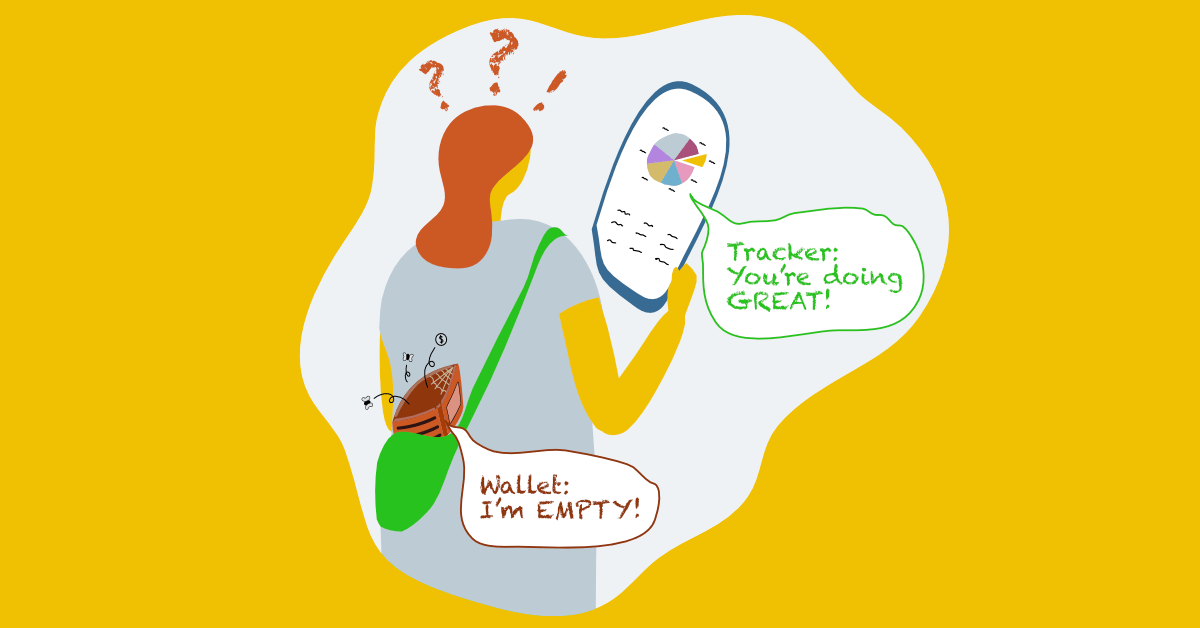I’ve tried expense trackers, budgeting systems, and almost everything, but my savings aren’t growing. What the hell is wrong with them? Or is it me doing it all wrong?
You are perfectly fine. The tools you were using are, probably, fine too. They didn’t work because they were just the wrong tools for your task. Simple trackers like Mint are good for an overview of your past but suck at helping you follow your financial plans. Plain methods of saving first, like 50-25-25, are brilliant when you have enough income to follow them. I bet, you have a specific situation though.
The 50-25-25 Methods
There are straightforward budgeting methods that suggest that you put 50% of your income for savings, 25% — towards your wants, and live on the remaining 25%. The numbers differ but the idea remains. While this is a perfect way of managing your finances, you might have some obstacles in using it. For example, your expenses are consistently equal to your income, and cutting them down might look impossible. Well, you could move out from your apartment or house and live under the bridge, but it would likely lower your quality of life which is not our goal, right?
Okay, you’d think, I only need to increase my income and start my money-wise life from scratch. Let’s not discuss how easy it is to increase your income, say 4 times. Instead, let’s imagine that you have already managed to do that. Your expenses would have stayed where they were before, but you would have started living by that magical 50-25-25 method, and be chilling in a couple of years with Warren Buffet boasting about your riches. Well… it usually doesn’t work that way. When your income increases, additional expenses follow. You finally decide to upgrade your car, move to a larger house, buy new phones, and the list goes on. You do it one by one, always repeating to yourself that this tiny addition to our expenses won’t hurt. In a couple of years, you find yourself far from Buffet but close to where you were with your previous income, but with bloated expenses that are impossible to trim down again. There’s a way out though—you need to learn to control your expenses first.
When you get in control of your expenses, you’ll set yourself on the path to actually coming to that 50-25-25 method. Your savings account will be growing exponentially, you’ll start investing accumulated money, and will soon live on the return from those investments on some paradise island. But first things first, you need to tame your finances. Which you have probably tried a couple of times before, and it didn’t work out. Let’s find out why.
Trackers for Spending History
I bet you tried using some of those trackers which show you nice graphs about your spendings. They might even allow you to set monthly limits on some of your categories so that you’d control your spendings. These don’t actually work to plan your money and follow the plan.
Looking at the history of your spendings, even if it is finely presented, doesn’t help to influence your future. It is a bit like studying the medical history of a dead person. It surely helps to find a cause and might hint at how to avoid lethal cases in the future, but you need something beyond such studies when working with a living patient. You need to monitor their performance, of course, but you first need to plan the treatment and adjust it according to what happens in real time.
What about setting limits on categories then? It is the treatment plan, and it should work just fine, right? Not exactly. First, those limits are based on your desired distribution of your usual income. Our desires don’t hold when faced with real life. And our primary income doesn’t always stay the same. When these limits are set in stone, they often don’t match how much you really can spend. For example, when you bought an unplanned present for your friend, the unplanned expense is not reflected anywhere.
While these fixed limits might be a basis for our first budget, they should become flexible and change with the events in our lives. This way, such limits would closely reflect your current situation, and you’ll follow them instinctively.
What’s more, when there’s no such option as to adjust your limits, you not only lose trust in them, but also feel guilty about your overspending. “Why did I buy that extra cup of coffee at Starbucks?” You blame yourself. That feeling doesn’t help you to achieve your goals.
How to Fix the Issues
“Okay, now I understand why I couldn’t make those trackers solve my problems. Now what?” You might ask yourself. Now, let’s finally consider what to do to get to your financial goal.
First, going negative on a couple of categories is not a problem, if you know what other categories would cover that. The whole system would work if you not only know, but visualize the re-assignment of budgeted amounts between categories.
Second, only plan with the money that you have on hand. It will save you from having cash flow gaps because you will know exactly what you can pay for at any given moment.
Third, just stay within your planned budget. It’s easier to do so when you know exactly how much is left for those expenses before you buy anything. And this is exactly the goal of all of the previous steps: you’ve decided how you’d spend your money, you certainly have that money, therefore it won’t hurt to buy another cup of cappuccino at Starbucks within the designated amounts.
When you make following these rules your second nature, there’s no way that you will lose control of your money ever again. With time, you can find some ways to trim your expenses to make way for savings. You’ll be pleasantly surprised that doing so won’t hurt your quality of life. And when you get that 4-fold increase in your income, you’ll be sure that it’s you alone who decides how much the expenses should grow.
Help Along Your Journey
Plussios is made exactly to help you budget your money and stick to your plan. You get guidance, tools, and community to help you achieve your financial goals whatever your income level. So, head over to the About Page and find out how you can benefit from Plussios. Just give it a try.

